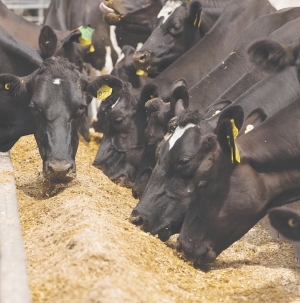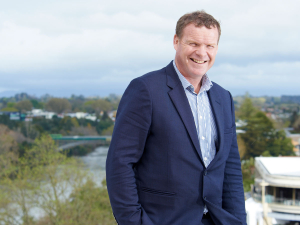Maize silage is the best autumn feed for dairy cows. It is cost effective especially if grown on a home farm or run-off. Maize silage is highly palatable and can therefore be fed in large amounts when required. Maize silage is a forage which creates pasture substitution.
Put simply this means if you feed a kilogram of maize silage drymatter to a cow, she will eat the maize silage and reduce her pasture intake. Feeding maize silage in the autumn allows farmers to build pasture levels while at the same time milking longer and lifting cow condition score.
Maximise your autumn milk production from maize silage by the following:
Harvest at the correct maturity. The ideal maize silage harvest drymatter is 30-38%. Crops greater than 38% drymatter are more difficult to compact, resulting in a slower fermentation and higher losses at feed-out time.
Use a quality silage inoculant. Quality silage inoculants improve silage feed value and reduce storage and feed-out losses. Not all inoculants work. Ask for product-specific trial data.
Use a plant processor. The aim is to ensure 99% (target minimum 80%) of the kernels are broken into at least four pieces. This will allow the rumen microbes better access to high energy maize starch.
Where possible store maize silage prior to feeding. Research has shown that starch digestibility of stored maize silage increases as a result of the fermentation process1. Allowing maize silage to ferment one-two months before feeding will result in higher starch availability than feeding a freshly ensiled crop. It is ideal to feed carryover maize silage from the previous season while your new crop ensiles.
Introduce maize silage slowly.
This is particularly important if you haven’t been feeding a grain source, as it will allow the rumen microbes time to adapt to higher dietary starch levels.
Feeding too much maize silage too soon can result in a lot of grain in the manure and/or digestive upsets.
Watch protein levels. In the late lactation, cows require about 14% crude protein. For best milk production results, maize silage (7-9% crude protein) should be coupled with a good quality protein source (e.g. leafy pasture or high quality pasture silage, lucerne or a protein concentrate such as soymeal).
Make sure cows have adequate access to clean water. Dairy cows require 5-10L of water per kilogram of drymatter eaten. This corresponds to a water intake of 80-160L per day for a cow consuming 16 kgDM. If you have cows spending lengthy times on a feed pad, ensure they have access to an adequate supply of clean water.
Add macro-minerals where necessary. Maize silage is low in some macro-minerals (especially calcium, sodium and phosphorus). As the percentage of maize silage in the diet of a milking cow increases, it is more likely these will need to be supplemented.
If you haven’t planted a maize silage crop, or arranged to buy one, talk to your local maize silage contractor as there are still a few crops for sale in some areas. Don’t miss out on the proven benefits of feeding maize silage in the autumn; it’s simply the best supplement available.
Talk to your local Pioneer area manager, animal nutritionist or veterinarian for farm-specific advice, or call toll-free.
Tel. 0800 746 633
www.pioneer.co.nz
1Jensen, C.; Weisbjerg, M.R.; Nørgaard, P.; Hvelplund, T. 2005. Effect of maize silage maturity on site of starch and NDF digestion in lactating dairy cows. Anim. Feed Sci. Tech. 118: 279-294.
• Ian Williams is a Pioneer forage specialist. Contact This email address is being protected from spambots. You need JavaScript enabled to view it.
















